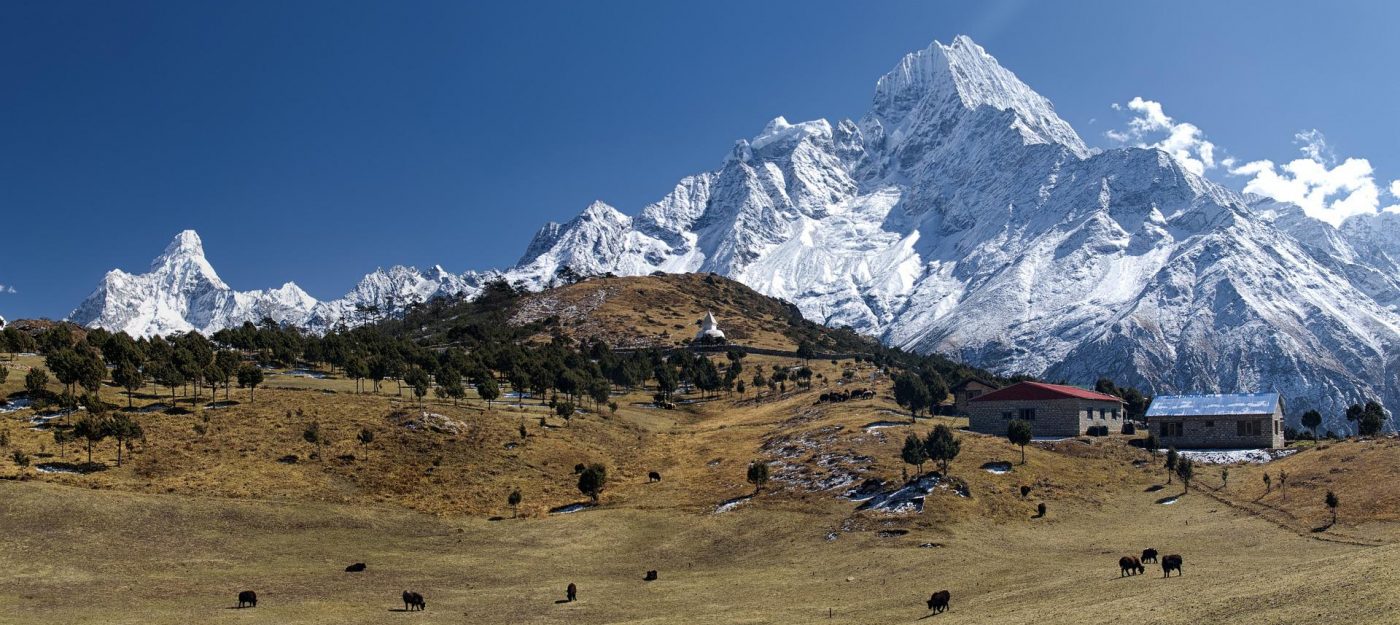
Where is Nepal?
The majority of the world is still uninformed of Nepal’s location. They merely ruminate on the location of Nepal, the Himalayan country. And then inquire, “Where is Nepal?” Don’t worry, this page will tell you everything you need to know about “where is Nepal,” Nepalese people, the Nepalese flag, the Nepalese capital, and much more.
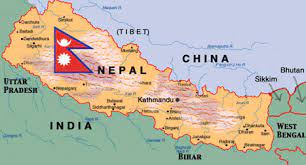
Location of Nepal
Nepal is a landlocked country in Southern Asia. Its official name is the Federal Democratic Republic of Nepal. As a result, Nepal is located in South Asia. Geographically, Nepalis are situated between latitudes 26.4831N and 29.8412N and between longitudes 80.3333E and 88.0943E. With a surface size of 147,181 square kilometers, the nation occupies 0.3% of the earth’s land and 0.3% of the Asia continent.
Nepal is a sovereign country located on the southern slope of the Himalayan mountain ranges, primarily in the Himalayas but also in parts of the Indo-Gangetic Plain. Nepal is a Himalayan country bordering India to the south, east, and west, and Tibet (an autonomous Chinese province) to the north. Bangladesh is only 27 kilometers from Nepal’s southeastern tip. As a result, the question of “Where is Nepal” or “Nepal’s Location” is now answered.
Nepal is home to the world’s tallest peaks, including the world’s highest mountain, Everest. Nepal is located between the Tropic of Cancer and the Arctic Circle, indicating its proximity to the Tropic of Cancer. Nepal’s climatic pattern is not temperate because the country is located at the foothills of the Himalayas.
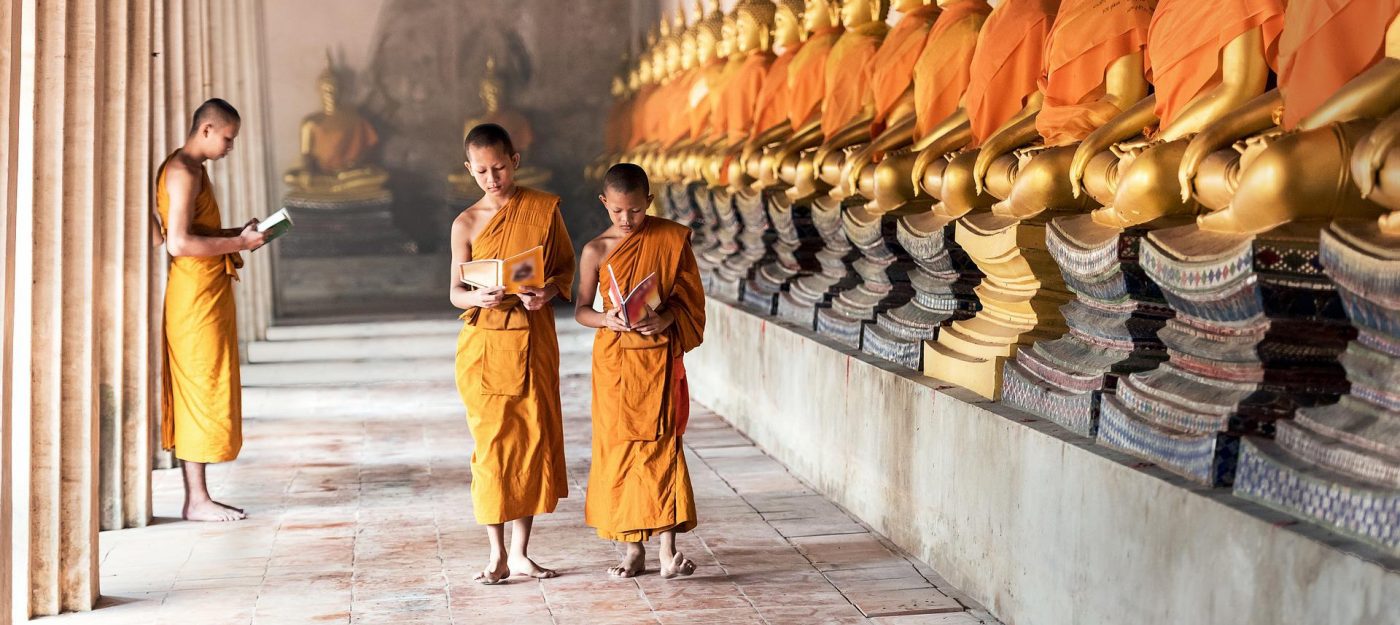
Kathmandu is Nepal’s capital city, with a total area of 1,47,181 square kilometers. In terms of population, it is ranked 49th, and in terms of area, it is ranked 93rd. It is a small country with a population of 28 million people and only 0.1 percent of the earth’s surface area. The elevation ranges from less than 1000 meters above sea level in the Terai region to 8848.86 meters at the peak of Mount Everest in the Himalayan region. Nepal is a multiethnic nation with Nepali as its official language.
When you know where Nepal is located, you’ll be able to answer the question, “Where is Nepal?” Let us now turn our attention to Nepal’s natural zones. Lowland, midland, and highland are the three ecological zones that Nepal may be split into. The Terai region is the lowland, the Hilly region is the midland, and the Himalayan region is home to the world’s tallest peak, Everest.
Ecological Zones of Nepal
The Low Land (Terai Region)
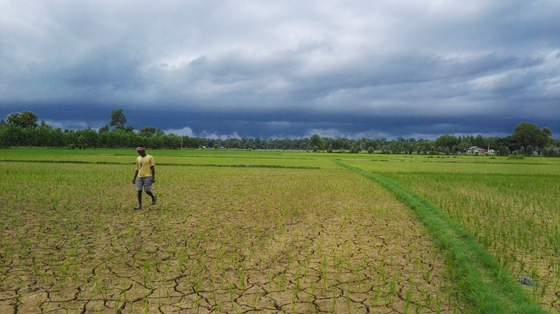
The Terai flat region begins at the Indian border and includes the southernmost part of the flat, known as Outer Terai, which covers 17 percent of Nepal’s entire land area. Because the majority of the population is involved in agriculture and trading, this region is known as Nepal’s farming land.
Terai is known as Nepal’s “storehouse.” Terai is also a heavily industrialized zone. Similarly, the Terai region houses 48 percent of the overall population, which is more than the Hilly and Himalayan regions. The Royal Bengal Tiger, leopard, one-horned Rhino, various kinds of deer, and 450 species of unique birds live in the Terai, a thickly forested sub-tropical jungle.
The Midland ( Hilly Region)
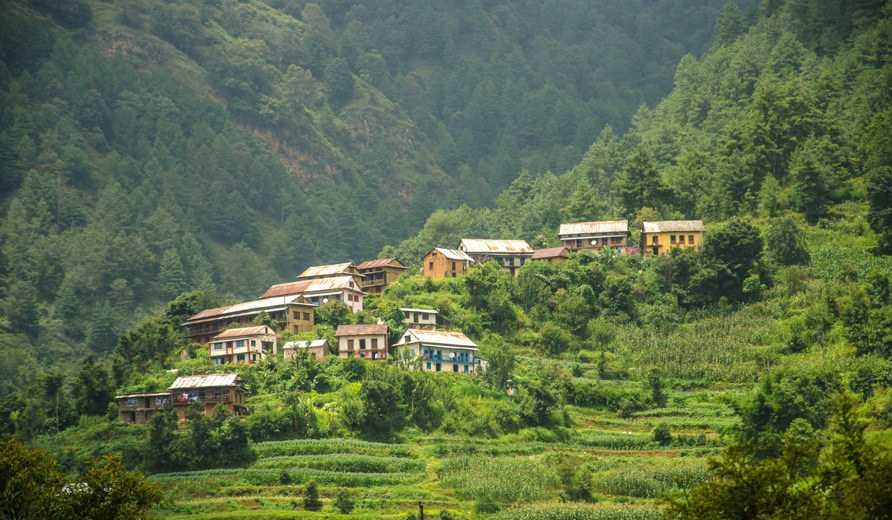
The hilly region, also known as the Midhill, is the largest of the three, accounting for 68 percent of the overall land area. With a population of 48 percent, the Hilly region is the mountain region without snow. The hilly terrain begins at the Mahabharat Range, south of the Himal.
The ancient ethnic people of Nepal live in the hilly region. The climate in this area is ideal, with a pleasant summer and a mild winter. The eastern slopes receive the most rainfall due to monsoon clouds from the Bay of Bengal. In addition, the hilly region is home to a variety of habitats, including leopards, deer, bears, monkeys, butterflies, and over 400 different bird species.
The Highland ( Himalayan Region )

The Himalayan Mountains, which cover 15% of the country’s total land area, are located on the country’s northern border. Some of the most well-known Himalayan peaks can be found in this region. This region is home to eight of the world’s ten highest peaks. Human settlement is much lower in the highlands than in the Hilly and Terai regions. There are only 8% of the population lives there. The main descendants of this region include Sherpas, Bates, and Tamang.
Climbing, adventure, and mountaineering guides make up the majority of the population. The Himalayan region’s maximum altitude range is 8848 meters, although human settlement is only practicable at elevations below 4000 meters. Summer settlements can be as high as 5000 meters.
Capital of Nepal
Aside from the question of where is Nepal or where is Nepal located, this article also provides information about Nepal’s capital. Nepal’s capital is Kathmandu. The city is also the most populous, having a population of over 1 million people. It is situated at a height of 1400 meters above sea level. Kathmandu is known as the “City of Temples” since it is home to the majority of Nepal’s cultural heritage monuments. The Kathmandu valley is home to seven of the ten UNESCO World Heritage Sites.
In the past, Kathmandu served as the Royal Capital of the Kingdom of Nepal. Since 1985, the city has served as the headquarters of the South Asian Association for Regional Cooperation (SAARC), which covers a total area of 49.45 square kilometers. Nepal’s capital is the epicenter of the country’s history, art, culture, and economics. It has a multi-ethnic population, with the Newar group making up the majority. In addition, the majority of people in Nepal’s capital follow Hinduism and Buddhism as their primary religions.
There are various legends about the valley’s formation. According to the Swayambhu Puran, Kathmandu, Nepal’s capital, was once a lake with a lotus floating on it. Manjushree from Tibet then noticed a bright flame emanating from the lotus and desired to see it. As a result, it is believed that he cut the George near Chobar hill, causing water from the lake to flow out and the valley to become livable.
The George can still be found in Chobar, around 6 kilometers southwest of Kathmandu. Later, the lotus’ dazzling flame transformed into Swayambhunath, which is today a Buddhist stupa. Others, on the other side, believe that Lord Krishna used his Sudarshan Chakra to cut the valley and sink a lovely city.
As a result of the various tales and beliefs, Kathmandu, Nepal’s capital, is an extraordinarily diversified medieval city with wonderful architecture.
Kathmandu Nepal
Kathmandu, Nepal’s capital, is the gateway to the Nepalese Himalayas. In Kathmandu, tourism is one of the most important aspects of the economy. TripAdvisor placed the city third among the top ten upcoming tourism destinations in the globe, and first in Asia. Kathmandu attracts a large number of visitors each year due to its unique culture and heritage. Kathmandu’s heritage sites are included in the UNESCO cultural heritage list.
Pashupatinath, Swayambhunath, Boudhanath, and Kathmandu Durbar Square are among the heritage sites in Kathmandu. There are various museums and art galleries in Kathmandu. In modern times, Kathmandu’s ancient Durbar Square serves as a museum preserving ancient art and architecture. Kathmandu enjoys a temperate climate, with hot summers and mild winters. Another element that attracts people to this city is its climate.
Patan and Bhaktapur are the districts that border Nepal’s capital. The Kathmandu valley includes these two districts, as well as Kathmandu. Before the Nepal Mandala, the valley was divided into three primary districts ruled by Malla monarchs. Kathmandu, Patan, and Bhaktapur share the same art, architecture, culture, and tradition thanks to the same kings. Furthermore, the Newar group makes up the majority of those who live in the valley.
The additional UNESCO-listed cultural heritage monuments at Bhaktapur and Patan, which are located within the Kathmandu valley, are Patan Durbar Square, Bhaktapur Durbar Square, and Changunarayan.
Nepal Population
Aside from the question of where Nepal is and where it is located, this page also discusses Nepal’s population. Despite its modest size, Nepal is the 49th most populous country in the world. Nepal’s population is estimated to be over 28 million people, despite the country’s small size of 1,47,184 square kilometers.
However, according to a recent poll conducted on January 30, 2021, Nepal’s total population is 29,438,815. The survey is based on an expansion of UN statistics using global meters. The population of Nepal is 0.37 percent of the world’s total population. In the city, there is a large Nepalese population. Kathmandu, Nepal’s capital, has the country’s largest population.
Kathmandu has a population of 1442271 people, followed by Pokhara, which has a population of roughly 200000 people. Major cities such as Patan, Bhaktapur, Chitwan, Biratnagar, Janakpur, Birjung, Dharan, Janakpur, Hetauda, and Nepaljung have large populations. Village areas such as Dolpa, Rolpa, Jumla, Rukum, and others have a low population density.
Nepal Population according to Geological Region
Hilly, Himalayan, and Terai Belts are the three ecological belts that Nepal is split into. In addition, the Nepalese population varies depending on which of the three ecological belts they live in. Nepal’s Highland or Himalayan region has the smallest total population. The Himalayan area of Nepal is home to about 8% of the country’s overall population, which is a small percentage compared to other regions.
Because a large portion of the Himalayan region is covered by mountains, human habitation is limited due to unsuitable landscapes and intense temperatures. The hilly region, on the other hand, is home to over 45 percent of the entire population. Because Nepal’s capital is located in this region, Kathmandu has a population of roughly 1442271 people.
People are drawn to this location because of its facilities and infrastructure.
Aside from that, the climate is a crucial influence on the high population density in this area. The climate in the Hilly region is mild and moderate, with warm summers and mild winters.
Finally, the Terai region has the greatest number of human settlements. The Terai area is home to about half of the country’s population. People favor the Terai region for farming and agriculture because of the flat and cultivable ground. Furthermore, industrial expansion has had a significant impact on this region. As a result, many prefer the Terai region because of the numerous amenities offered.
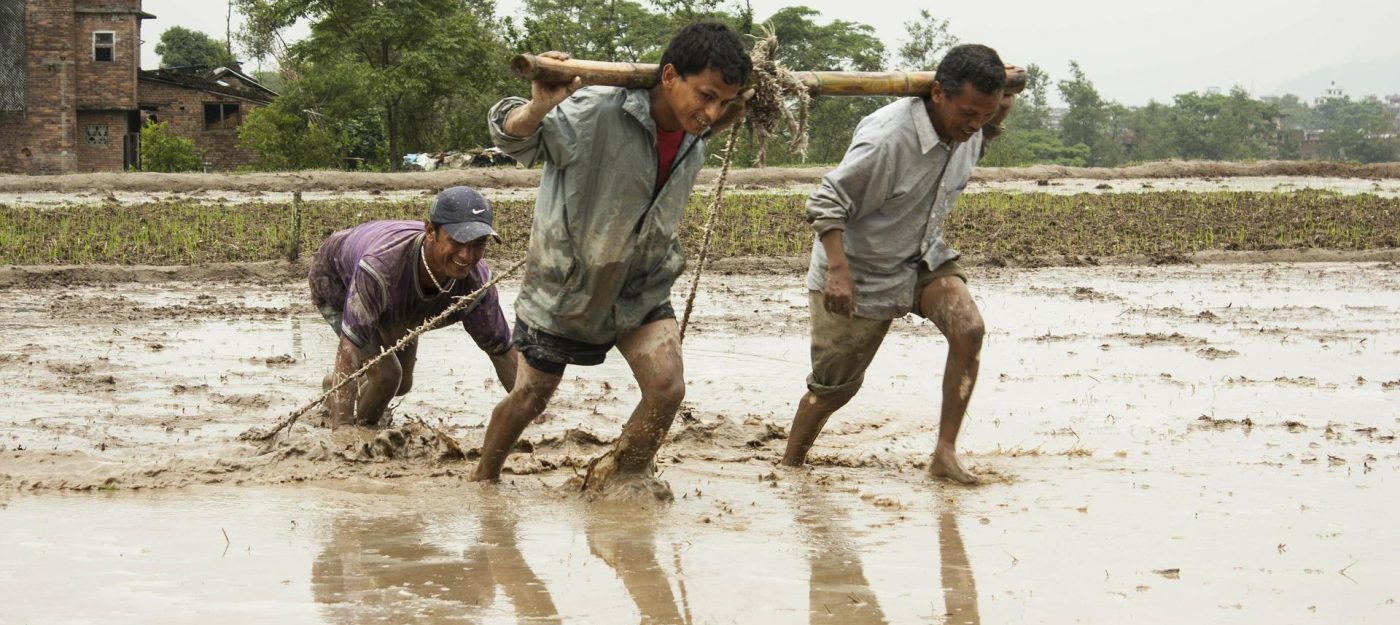
The Profession of Nepali People
Nepal People are nice, diligent, and brave. Agricultural vocations employ the majority of the population. Nepal is primarily an agricultural country, with farmers accounting for the majority of the population. The occupation of Nepalese people, on the other hand, varies depending on the geological location. The majority of individuals in the Himalayan area work in the tourism industry. Nepal’s mountains are well-known around the world since it is home to some of the world’s highest peaks, including Everest.
Tenzing Norgay Sherpa, a Nepali, and Sir Edmund Hillary, a New Zealander, were the first to reach the peak of Everest. Similarly, individuals in the Hilly Region work in agriculture, while city dwellers work in various companies and trade. Similarly, people in Terai are farmers, dealers, and workers in a variety of major and small-scale industries.
Nepali People according to Geographical Region
The settlement in Nepal, on the other hand, is based on the geographical region. The population of Nepal’s higher region, or Himalayan region, are predominantly Sherpas, Tamang, and Bhotes, with Buddhism as their primary religion. Because the Himalayan region is close to Tibet, its culture and traditions are comparable to Tibet’s. The Hilly region of Nepal, on the other hand, is multiethnic.
The Hilly region, which contains the capital city, is home to people of all castes, religions, and occupations. The Newar community makes up the majority of the population in Kathmandu Valley, although there are also Brahmins, Chhetris, Magars, Gurungs, Rai, Sunar, Bishwokarma, and other ethnic groups.
The majority of Nepalese people are Hindus, with the remainder being Buddhists, Christians, and Muslims.
The majority of people in the village region work in agriculture, whereas in the city area, industries, business, and banking are the main sources of income. Similarly, Tharu are the main descendants of the Terai regions. Because of its proximity to India, the Terai region’s culture and traditions are comparable to those of India. The people who live in Nepal’s Terai region work in an industrial center, trade, and agriculture, among other things.
Nepali Flag
Finally, the main article Where is Nepal or Nepal’s location now includes a section on the Nepal Flag. With the rectangular flag of 194 countries, one can immediately spot the flag with distinctive elements, which is, of course, the Nepal flag. Nepal’s national flag is the world’s only non-rectangular flag. The flag is made up of two pennons in three different colors. Red, blue, and white are the colors of the flag. The ruby red color represents bravery and the Nepalese national flower, the Rhododendron.
The blue border on the pennons represents peace, while the white sun and moon represent the country’s longevity, which is equal to that of the sun and moon. Nepal’s flag serves as both a national and a civil flag. Each country’s flag has its own significance, and the Nepal flag is no exception. It is a symbol of the country’s pride, victory, and self-honor.
While many other countries on the Indian subcontinent were dominated by the British from the 17th to the 19th centuries, Nepal has remained a separate sovereign state. During the years when the world was controlled by the British, Nepal proudly displayed its ancient flag.
The flag’s design has been passed down through the ages. Crimson and blue, the colors of the flag, have long been used in Nepalese art and adornment. Like the sun and the moon, the white moon in the upper section and the white sun in the second pennons are associated with several dynasties and the nation’s lifespan. However, under the new democratic constitution on Dec 16, 1962, the current Nepal Flag was adopted with the same features.
Plants of Nepal
Nepal’s natural vegetation follows climatic and altitude patterns. The Tarai and the Churia Ranges have a tropical, damp zone of deciduous flora. Khair (Acacia catechu), a spring tree with yellow flowers and flat pods; sissoo (Dalbergia sissoo), an East Indian tree yielding dark brown durable timber; and sal (Shorea robusta), an East Indian timber tree with foliage that provides food for lac insects (which deposit lac, a resinous substance used to make shellac and varnishes, on the tree’s twigs). At heights between 5,000 and 10,000 feet on the Mahbhrat Range, the vegetation consists of a mix of different species, primarily pines, oaks, rhododendrons, poplars, walnuts, and larch.
Fir mixed with birch, as well as rhododendron, occur between 10,000 and 12,000 feet. A dense population in Nepal’s mid-mountain region has removed all but the most inaccessible parts of the forest, which are confined to steep slopes and rocky terrain. Similarly, overcutting and depletive methods have decimated all readily accessible areas of the Tarai’s important sal forest.
The Great Himalaya Range’s extensive wooded area below the timberline has some of Nepal’s most valuable forests, including spruce, fir, cypress, juniper, and birch. The Great Himalaya Range’s higher elevations are covered in alpine flora. In the summer, green vegetation just below the snow line, between 14,000 and 15,000 feet, provides good grazing area.
Animals in Nepal
Tigers and leopards, gaurs (wild cow), elephants, and buffalo occasionally appear in the Tarai’s forested sections, as do numerous deer, including chital, or axis, deer (which have white-spotted bodies), sambar (a huge Asiatic deer with coarse hair on the throat and strong antlers), and swamp deer. The Lesser Rpti Valley, located in central Nepal, is one of the last remaining habitats for the giant Indian rhinoceros (Rhinoceros unicornis).
The horn of the rhinoceros is thought to be valued as an aphrodisiac, therefore there has been a lot of poaching, but the Nepalese government implemented protection measures in the 1960s.
Because of the forest clearing, there are few wild creatures in the central zone. Leopards, bears, and other small carnivores are occasionally seen in the forests and ravines, and muntjacs (a type of tiny deer often known as the barking deer) can be found in the woods.
Musk deer, who are heavily sought for their musk pods, tahr (a Himalayan beardless wild goat), goral (any of many goat antelopes closely related to the Rocky Mountain goat), and wild sheep, which are preyed upon by wolves and snow leopards, all live in the Alpine zone. The pheasant is a common bird. The Sherpa say the Yeti (bear-man, or Abominable Snowman) lives in the high mountains, but successive expeditions have failed to find him.
Economy of Nepal
Nepal is one of the world’s least developed countries, being landlocked, without significant resources for economic development, and handicapped by an inadequate transportation network. The economy is reliant on basic materials imports as well as overseas markets for forest and agricultural products. Nepal imports basic necessities like gasoline, construction materials, fertilizers, metals, and most consumer goods, and exports rice, jute, lumber, and textiles.
Nepal’s political and administrative systems have not implemented the necessary adjustments in trade, investment, and associated economic policies to speed up economic development and attract foreign investment. The government’s development plans, which are financed by foreign aid, have also failed to address the needs of rural people directly.
Conclusion
The page provides an overview of Nepal’s location, or where it is located, as well as other aspects of Nepal. Nepal, a small country in southern Asia, has a diverse range of vegetation, culture, art, and architecture, as well as natural settings. Nepal is a secular country famous for the High Himalayas, which include the world’s tallest peak, Everest. Th is a popular tourist destination due to the Nepalese people’s great friendliness, their culture and tradition, old art, and architecture.
Cultural exploration, ethnic groupings, festivals, religion, and adventure in the Himalayan region provide additional amusement and refreshment to your trip to Nepal. Furthermore, Tibetan culture has a strong influence on the Himalayan region. Similarly, the mid-hill has its own culture that has been preserved. The Terai, on the other hand, is near to India and hence exudes Indian culture.
Interested in knowing more about Nepal
Inquiry
If you want to know anything regarding the trip or any other issue, please feel free to ask us
